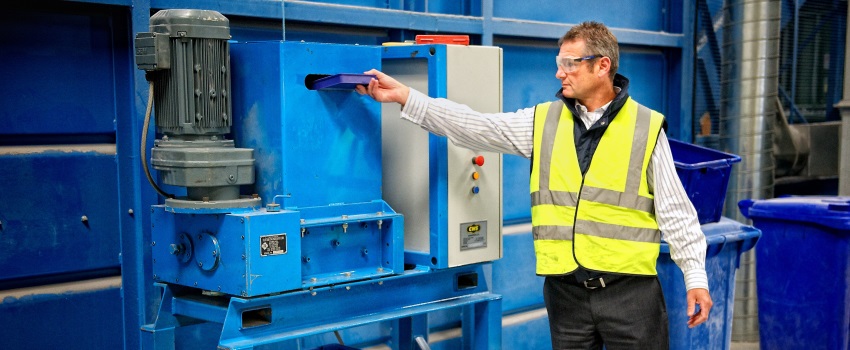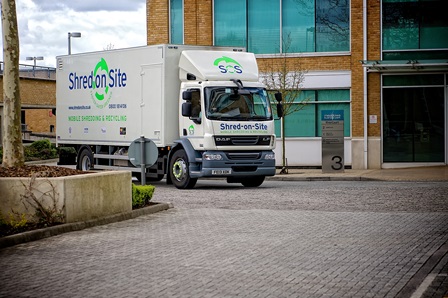A Guide to Hard Drive Shredding and Destruction
In an era where digital data proliferates every aspect of our lives, the security of that data becomes essential. Whether it's personal photos, financial records, or confidential business information, ensuring that unwanted data doesn't fall into the wrong hands is crucial. That's where hard drive shredding and destruction come in.
Why Hard Drive Shredding is Essential
- Data Protection
Simply deleting files or formatting a hard drive doesn't erase the data; it merely removes the path to access those files. Skilled individuals can still recover the data. Hard drive shredding ensures the data is irretrievable.
- Compliance with Laws and Regulations
Various industries are governed by regulations that mandate the secure destruction of sensitive data. Hard drive shredding helps businesses comply with these regulations, avoiding hefty fines.
- Peace of Mind
Knowing that your sensitive data has been securely destroyed can give you peace of mind, especially in an age where identity theft and data breaches are rampant.
Understanding Hard Drive Destruction Methods
- Physical Destruction
This involves physically breaking the hard drive, making it unusable. However, physical destruction alone might not ensure the data is unrecoverable.
- Shredding
Hard drive shredding is akin to shredding paper documents on a much more robust scale. Specialised machines grind the hard drive into tiny pieces, making data recovery virtually impossible.
- Degaussing
This method demagnetises the hard drive, erasing its data. However, it doesn't provide the same visual confirmation of destruction as shredding.
The Process of Hard Drive Shredding
Ensuring digital data security extends beyond simple deletion or formatting; it requires a comprehensive approach to destruction. Hard drive shredding is a meticulous, multi-step procedure to guarantee that sensitive information is permanently eradicated and responsibly managed from start to finish. Here's how it unfolds:
- Collection and Logging
Hard drives are collected and logged to maintain a chain of custody. This step is crucial for businesses that must prove compliance with data protection regulations. - Shredding
The hard drives are fed into a shredder, where they're torn into small pieces. This process is thorough, ensuring that no data can be reconstructed or retrieved. - Recycling
Post-shredding, the remnants of the hard drives are sent to a recycling facility. This ensures that the materials are responsibly disposed of, minimising environmental impact.
Choosing a Hard Drive Shredding Service
Selecting the right hard drive shredding service is an important decision with far-reaching implications. It affects the security of your sensitive data, your compliance with regulatory standards, and your commitment to environmental sustainability. There are key factors to consider to ensure that your data is handled with the utmost security and responsibility:
- Certification and Compliance
Look for certified services that comply with national and international data destruction standards.
- Security Measures
Ensure the service provides a secure chain of custody from collection to destruction.
- Environmental Responsibility
Choose services that prioritise recycling the shredded materials.
Is Hard Drive Shredding Necessary If I've Already Erased All My Files?
When securing your digital data, simply erasing files or formatting your hard drive may seem like sufficient steps to prevent data recovery. However, these methods do not guarantee the complete destruction of data.
- Deleting Files
When you delete files from your hard drive, the data isn't immediately removed. Instead, the space those files occupied is marked as available for new data. Until that space is overwritten by new data, the original files can often be recovered using specialised software. This means that someone with the right tools and knowledge could still retrieve sensitive information.
- Formatting a Hard Drive
Formatting a hard drive is a step up from merely deleting files, but it still doesn't securely erase data. Quick formatting, for example, only deletes the index information and doesn't touch the underlying data, making it potentially recoverable. Even a full format won't always protect against all data recovery methods, especially if the drive isn't overwritten with new data.
- Hard Drive Shredding
Unlike deleting or formatting, hard drive shredding provides a foolproof method for destroying data. Shredding physically breaks down the hard drive into tiny pieces, making it impossible to recover any data. This process ensures that your sensitive information—whether it's personal photos, financial records, or confidential business documents is completely destroyed and beyond the reach of data recovery tools.
Hard drive shredding is necessary for individuals and organisations handling sensitive information that must be irretrievably destroyed to comply with privacy laws and regulations. It's the gold standard for data destruction, offering peace of mind that cannot be matched by software-based deletion or formatting methods.
DIY Hard Drive Destruction: Pros and Cons
When it comes to destroying hard drives, many might contemplate taking matters into their own hands. However, embarking on DIY hard drive destruction requires careful consideration of its pros and cons.
Pros
- Immediate Results
DIY destruction allows for immediate physical damage to the hard drive, making it inoperable. This method provides a quick solution for those requiring urgent data destruction. - Cost-Effective
DIY methods can be more affordable than professional services for individuals or small businesses with budget constraints. Using tools or methods readily available at home or within a small office can reduce expenses. - Control Over Data
Handling the destruction process personally provides control over one's sensitive data. It eliminates concerns about handing over data to third parties, however reputable they may be.
Cons
- Incomplete Data Destruction
The biggest drawback of DIY hard drive destruction is the risk of incomplete data destruction. Physical damage, such as hammering or drilling, may not completely destroy all data, leaving remnants that could be recovered with advanced techniques. - Safety Risks
DIY methods often involve physical destruction techniques that can be hazardous. Without proper safety equipment or techniques, individuals risk personal injury from shards of metal, glass, or toxic substances released from the hard drive. - Environmental Impact
Incorrect disposal of hard drive components can harm the environment. Professional shredding services often include responsible recycling of materials, whereas DIY methods might lead to improper disposal. - Legal and Compliance Issues
For businesses, DIY destruction may not meet legal standards for data destruction. Regulations such as HIPAA, GDPR, or FACTA require documented proof of secure data destruction, which professional services can provide through certificates of destruction. DIY methods lack this documentation, potentially exposing businesses to legal risks and fines. - Efficiency and Effectiveness
Professional shredding machines are designed to reduce hard drives to particles so small that data recovery is impossible. DIY methods rarely achieve this level of destruction, making professional services more efficient and effective.
Hard drive shredding and destruction are critical components of data security. Whether you're a business looking to comply with data protection regulations or an individual seeking to safeguard personal information, understanding and utilising hard drive shredding services is essential. Choosing a reputable shredding service ensures that your data is securely destroyed, giving you peace of mind in the digital age.
Get in touch with us today to request a quote for all your shredding needs, whether that’s a one-off service or setting up a regular service. Why not try our online tool.







